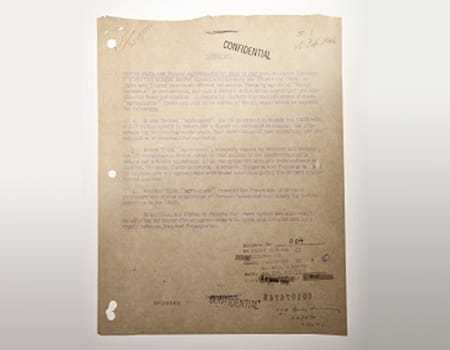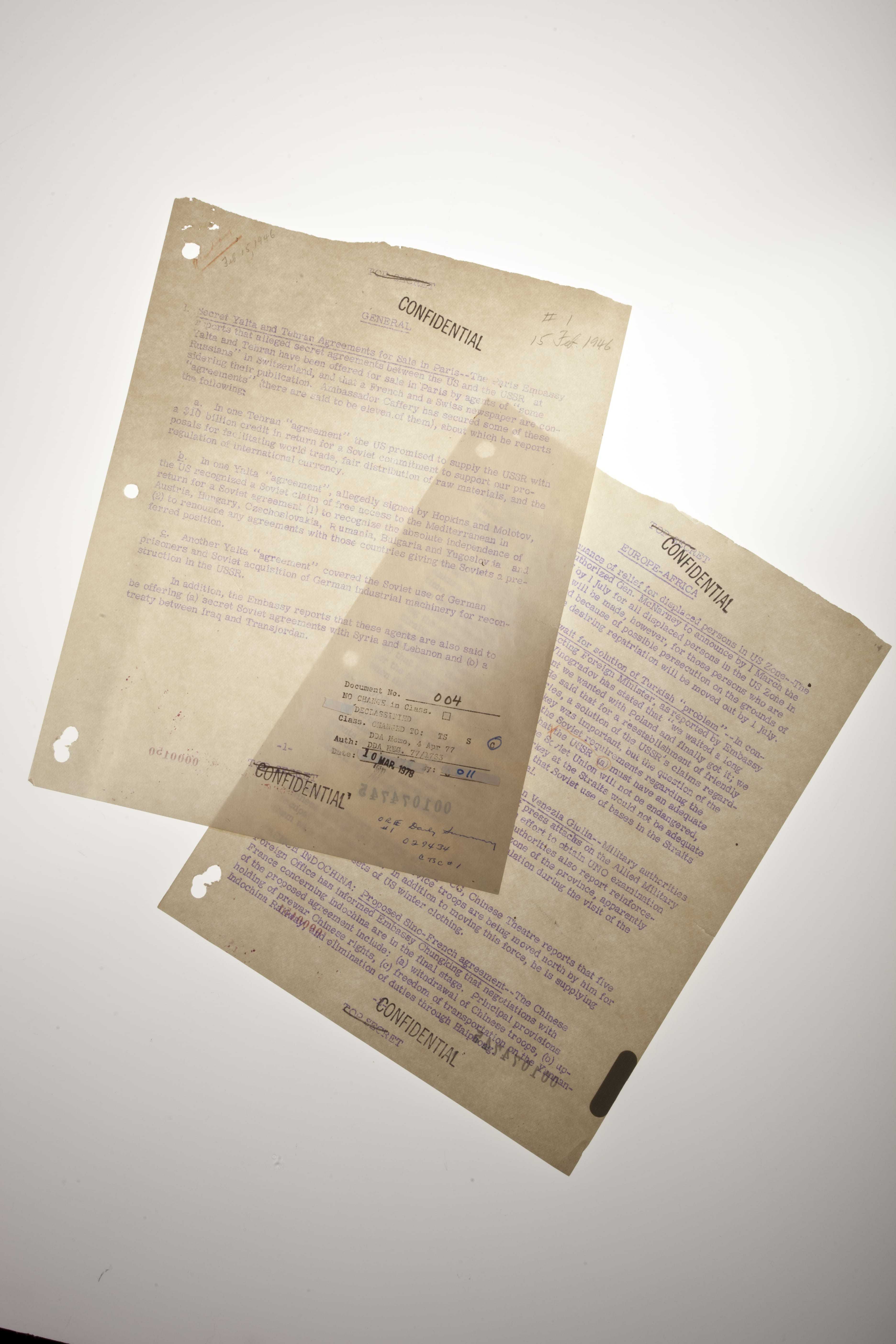Artifact Details

The first daily summary marked the start of a new mission for CIA: provide strategic warning to the nation’s highest leaders.
Annoyed by the amount of uncoordinated and contradictory intelligence reports he was seeing in the wake of World War II, President Harry S. Truman tasked CIA and its immediate predecessor, the Central Intelligence Group (CIG), to provide him with a synthesized daily briefing on the latest foreign intelligence. The “Daily Summary,” a two- to three-page publication written for Truman and his designees, débuted on 15 February 1946 and established a tradition. Daily intelligence briefings have continued during the terms of every president since Truman.
Artifact Specs
28 cm x 21.6 cm
(L x W)
Additional Photos

Learn More
Video
The De-Brief -- The President's Daily Brief (PDB)
Today we’re going to talk about one of the most critical unclassified documents to come out of this country. The President’s Daily Brief, more commonly known as the PDB.
Contrary to its name though, it doesn’t just go to the President. It actually is received by cabinet members, the National Security Council, but one thing that is important is that it is specific to the preferences of the person who holds the highest office in the country, the President of the United States.
Every time a new president takes office, the CIA works to really make sure that we take those preferences into consideration. When John F. Kennedy received his brief, it was known as the President’s Intelligence Checklist or the PICL. When Bush 41 was president, he had the rare insight into our organization that no president before him ever had. He was our director, so he understood how important the intelligence coming out of this organization was and was the first president to request an in-person briefing of the President’s Daily Brief.
President Obama was the first president to receive the PDB on a tablet. This was great for our graphics people, as it allowed them the opportunity to create highly sophisticated interactives. The topics of the PDB are going to change based off of what’s going on in the world. But one thing that doesn’t change is it is always timely, factual and non-politicized information.
